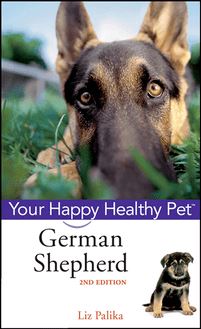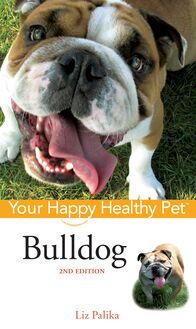-
 Univers
Univers
-
 Ebooks
Ebooks
-
 Livres audio
Livres audio
-
 Presse
Presse
-
 Podcasts
Podcasts
-
 BD
BD
-
 Documents
Documents
-
- Cours
- Révisions
- Ressources pédagogiques
- Sciences de l’éducation
- Manuels scolaires
- Langues
- Travaux de classe
- Annales de BEP
- Etudes supérieures
- Maternelle et primaire
- Fiches de lecture
- Orientation scolaire
- Méthodologie
- Corrigés de devoir
- Annales d’examens et concours
- Annales du bac
- Annales du brevet
- Rapports de stage
La lecture à portée de main
Vous pourrez modifier la taille du texte de cet ouvrage
Découvre YouScribe en t'inscrivant gratuitement
Je m'inscrisDécouvre YouScribe en t'inscrivant gratuitement
Je m'inscrisEn savoir plus
Vous pourrez modifier la taille du texte de cet ouvrage
En savoir plus

Description
PART ONE: Welcome to the World of the Akita.
1. What Is an Akita?
2. The Akita's Ancestry.
3. The World According to the Akita.
PART TWO: Living with an Akita.
4. Bringing Your Akita Home.
5. Feeding Your Akita.
6. Grooming Your Akita.
7. Keeping Your Akita Healthy.
PART THREE: Enjoying Your Dog.
8. Basic Training (Ian Dunbar, Ph.D., MRCVS).
9. Getting Active with Your Dog (Bardi McLennan).
10. Your Dog and Your Family (Bardi McLennan).
11. Your Dog and Your Community (Bardi McLennan).
PART FOUR: Beyond the Basics.
12. Recommended Reading.
13. Resources.
Sujets
Informations
| Publié par | Turner Publishing Company |
| Date de parution | 20 août 2007 |
| Nombre de lectures | 0 |
| EAN13 | 9780470252703 |
| Langue | English |
| Poids de l'ouvrage | 2 Mo |
Informations légales : prix de location à la page 0,0900€. Cette information est donnée uniquement à titre indicatif conformément à la législation en vigueur.
Extrait
The
Akita
Howell Book House
A Simon Schuster Macmillan Company
1633 Broadway
New York, NY 10019
Copyright 1996 by Howell Book House
All rights reserved. No part of this book may be reproduced or transmitted in any form or by any means, electronic or mechanical, including photocopying, recording, or by any information storage and retrieval system, without permission in writing from the Publisher.
MACMILLAN is a registered trademark of Macmillan, Inc.
Library of Congress Cataloging-in-Publication Data
Bouyet, Barbara.
Akitas / Barbara Bouyet.
p. cm. - (An owner s guide to a happy healthy pet)
Includes bibliographical references.
ISBN 0-87605-491-2
1. Akita dogs. I. Title. II. Series.
SF429.A65B69 1996 96-8888
636.7 3-dc20 CIP
Manufactured in the United States of America
10 9 8 7 6 5 4 3 2
Series Director: Dominique DeVito
Series Assistant Director: Ariel Cannon
Book Design: Michele Laseau
Cover Design: Iris Jeromnimon
Illustration: Jeff Yesh and Ryan Oldfather
Photography:
Cover and puppy by Paulette Braun/Pets by Paulette
Joan Balzarini: 96
Mary Bloom: 96, 136, 145
Barbara Bouyet: 8, 15, 17, 20, 59, 60, 61, 62
Paulette Braun/Pets by Paulette: 11. 36-37, 39, 44, 50, 69, 96
Buckinghamhill American Cocker Spaniels: 148
Sian Cox: 18, 21, 23, 26, 48, 79, 134
Dr. Ian Dunbar: 98, 101, 103, 111, 116-117,122, 123, 127
Steve Eltinge: 12, 33, 38, 41, 43, 63, 67
Dan Lyons: 96
Cathy Merrithew: 129
Scott McKiernan/Zuma: 30
Liz Palika: 133
Susan Rezy: 96-97
Judith Strom: 5, 7, 24, 45, 53, 96, 107, 110, 128, 130, 135, 137, 139, 140, 144, 149, 150
Toni Tucker: 27
Faith Uridel: 2-3, 10, 64, 73
Jean Wentworth: 22
Production Team: Kathleen Caulfield, Vic Peterson, Christina Van Camp, and John Carroll
Contents
part one
Welcome to the World of the Akita
1 What Is an Akita?
2 The Akita s Ancestry
3 The World According to the Akita
part two
Living with an Akita
4 Bringing Your Akita Home
5 Feeding Your Akita
6 Grooming Your Akita
7 Keeping Your Akita Healthy
part three
Enjoying Your Dog
8 Basic Training
by Ian Dunbar, Ph.D., MRCVS
9 Getting Active with Your Dog
by Bardi McLennan
10 Your Dog and Your Family
by Bardi McLennan
11 Your Dog and Your Community
by Bardi McLennan
part four
Beyond the Basics
12 Recommended Reading
13 Resources
chapter 1
What Is an Akita?
Chances are, at some time you ve seen an Akita puppy resembling a bear cub, or perhaps you ve met an adult, with his imposing look of strength and power. Intrigued by his impressive appearance and proud attitude, you wonder (and are told):
What type of dog is he?
He s an Akita, pronounced ahh-KEE-tah
He looks just like a bear.
They are used to hunt bear in their native Japan.
Is he friendly?
Yes, but not demonstrative with strangers.
Does he need a lot of room to run?
He needs exercise, as we all do, but he can live in an apartment.
What is this dog that attracts so much attention? Is he a dog for everyone? Will he fit into a family with small children? Is he very active? Does he like other dogs? Are Akitas easy to train? The answers are, yes, and no. Yes, if you are willing to spend time socializing and training your Akita, meeting the challenges of this breed s intellect and ingenuity. No, if you have a schedule already stretched to capacity.
WHAT IS A BREED STANDARD?
A breed standard-a detailed description of an individual breed-is meant to portray the ideal specimen of that breed. This includes ideal structure, temperament, gait, type-all aspects of the dog. Because the standard describes an ideal specimen, it isn t based on any particular dog. It is a concept against which judges compare actual dogs and breeders strive to produce dogs. At a dog show, the dog that wins is the one that comes closest, in the judge s opinion, to the standard for its breed. Breed standards are written by the breed parent clubs, the national organizations formed to oversee the well-being of the breed. They are voted on and approved by the members of the parent clubs.
As a puppy, the Akita resembles a huggy-bear cub, but he gains nearly 85 pounds during the first year of growth. With judicious but firm handling as the puppy grows into a powerful adult, you will have a devoted companion and enthusiastic guardian of home and family.
A mature Akita will have stand-up ears and a tail. The bearlike head and thick tail are hallmarks of the breed, but the infinite variety of colors and patterns makes each dog unique.
Japanese or American?
The Akita evolved in Japan through centuries of breeding to Japanese standards. Standards are a written concept of the ideal dog for the breed, though no dog may actually reach such perfection. A breed standard details the general appearance, characteristics such as head, eyes, ears, tail, forequarters, hindquarters, topline, body proportions, gait and color. The parent breed club formulates the standard. As the breed develops, the standard is revised and expanded to reflect improvements.
In 1960 the Akita Club of America, Inc. (ACA) was formed to represent the breed as parent club in this country. The ACA was responsible for maintaining the stud book, an accurate chronicle of breeding records, and of writing a breed standard for the American Akita.
American Akitas are larger-boned than their Japanese counterparts
The Standard in Review
The standard for the Akita in America was designed to bring uniformity to the breed-to shape a disparate group of imported Akitas into a breed with consistent type and soundness. The American Kennel Club approved and accepted the current breed standard on April 4, 1973, and with this recognition, the stud books and the door closed on Japanese imports.
The closing of the registry caused two divergent breeds to occur between Japan and the United States. As the Japanese continued to refine and restore their Akitas, the gap widened. The closed registry barred American breeders from pursuing the same goals as the Japanese and the rest is history, as they say.
In 1992, the AKC reached an accord with the Japan Kennel Club and the stud books were reopened, allowing imported Akitas to be registered and entered in AKC shows. The differences between American and Japanese Akita standards were evident with the arrival of the first imports. Among dog show enthusiasts, the differences give supporters an opportunity for many hours of heated debate, but for the purposes of this book we will deal with the American Akita.
If you have a photo or other facsimile of an adult Akita in front of you, this section will be easy to follow (see the drawing on page 4).
Describing the Akita
The Akita is a Spitz breed, one of the Northern dogs, which makes him a cousin to the Alaskan Malamute, Chow Chow, Siberian Husky and others. Characteristic of Northern breeds is the prominent skull, wedge-shaped head, small pricked ears, dense undercoats and powerful jaws.
Heavy bone, strong muscles, and a large bearlike head emphasize the Akita s general appearance as a powerful, fearless and proud dog. The thick, curled tail enhances the perception of a well-balanced dog. The head, which is the hallmark of the breed, is in balance with the body; the tail is large enough to counterbalance the bearlike head. The Akita s intrepid spirit and regal bearing announce his presence.
The wedge-shaped head, prick ears and dense undercoat of the Akita are characteristic of Northern Spitz breeds.
The head is massive in appearance, free of wrinkles, with a broad flat skull between the wide-set ears. The correct head evokes an awareness of this breed s power and size. Look for the unmistakable triangles in a correct Akita head: the overall wedge shape of the head is triangular looking at the face and as seen from under the jaw. The small eyes and ears are triangular as well. The pronounced cheeks, especially in males, add to the overall effect of size and width.
The standard lists faults and disqualifications. Translated, they mean undesirable problems that occur in the breed. A fault is unattractive but a disqualification means banishment from the showring. A narrow or snipey head is a fault.
Eyes are dark brown, deep-set, with tight, triangularshaped rims. A broad, black nose (liver is acceptable only in the white Akita) and wide muzzle enhance the concept of massive. The standard disqualifies a butterfly nose (a nose with partial pigment) and a total lack of pigment.
The Akita s ears are unique, unlike those of any other breed. Thick leather ears stand erect, forming into perfect triangles with slightly rounded tips. Smaller in comparison to the head, the wide-spaced ears are carried forward over the eyes in a graceful curve toward the short, powerful neck. When viewed from the side, the 45-degree forward angle of the ears gives an impression of an alert, intelligent dog intently listening for the sound of his owner. When pulled forward, the tip just touches the upper eye rim. Drop or broken ears are a disqualification.
THE AMERICAN KENNEL CLUB
Familiarly referred to as the AKC, the American Kennel Club is a nonprofit organization devoted to the advancement of purebred dogs. The AKC maintains a registry of recognized breeds and adopts and enforces rules for dog events including shows, obedience trials, field trials, hunting tests, lure coursing, herding, earthdog trials, agility and the Canine Good Citizen program. It is a club of clubs, established in 1884 and composed, today, of over 500 autonomous dog clubs throughout the United States. Each club is represented by a delegate; the delegates make up the legislative body of the AKC, voting on rules and electing directors. The American Kennel Club maintains the Stud Book, the record of every dog ever registered with the AKC, and publishes a variety of materials on purebred dogs, including a monthly magazine, books and numerous educational pamphlets. For more information, contact t
-
 Univers
Univers
-
 Ebooks
Ebooks
-
 Livres audio
Livres audio
-
 Presse
Presse
-
 Podcasts
Podcasts
-
 BD
BD
-
 Documents
Documents
-
Jeunesse
-
Littérature
-
Ressources professionnelles
-
Santé et bien-être
-
Savoirs
-
Education
-
Loisirs et hobbies
-
Art, musique et cinéma
-
Actualité et débat de société
-
Jeunesse
-
Littérature
-
Ressources professionnelles
-
Santé et bien-être
-
Savoirs
-
Education
-
Loisirs et hobbies
-
Art, musique et cinéma
-
Actualité et débat de société
-
Actualités
-
Lifestyle
-
Presse jeunesse
-
Presse professionnelle
-
Pratique
-
Presse sportive
-
Presse internationale
-
Culture & Médias
-
Action et Aventures
-
Science-fiction et Fantasy
-
Société
-
Jeunesse
-
Littérature
-
Ressources professionnelles
-
Santé et bien-être
-
Savoirs
-
Education
-
Loisirs et hobbies
-
Art, musique et cinéma
-
Actualité et débat de société
- Cours
- Révisions
- Ressources pédagogiques
- Sciences de l’éducation
- Manuels scolaires
- Langues
- Travaux de classe
- Annales de BEP
- Etudes supérieures
- Maternelle et primaire
- Fiches de lecture
- Orientation scolaire
- Méthodologie
- Corrigés de devoir
- Annales d’examens et concours
- Annales du bac
- Annales du brevet
- Rapports de stage




















